KRM Branch 27th June 2021
The June excursion was a Fungi Walk in Paganoni Reserve, Karnup. An excellent turnout of 25 members plus visitors gathered in the car park off Paganoni Road for the walk despite the weather forecast being for heavy rainfall. It was great to have Elaine Davison join us for the walk, and her provision of expert knowledge would significantly add to our enjoyment. It was also good to have Leonie Stubbs, the Coordinator of the Friends of Paganoni group that does such excellent work maintaining the reserve, also join us in the morning.
Our walk took us into the winter-wet area just off the limestone track that runs parallel with the power lines. This area has many fallen Swamp Paperbarks (Melaleuca rhaphiophylla), Banksia sp. and Tuart (Eucalyptus gomphocephala) that provide a suitable habitat for many types of fungi. The good late autumn and early winter rainfall had, once again, made this area an abundant source of fungal specimens for us to photograph or study, and it wasn’t long before we found specimens, and discussions commenced as to the identification. Elaine was in demand to lend her expertise. Fungi were found both on wood and in the soil, with some even found on pellets of kangaroo scat!
The types of fungi found on the fallen wood included bracket fungi, which includes Royoporus badius, Pycnoporus coccineus (Scarlet Bracket) and Hexagonia vesparia (Wasp Nest Polypore), plus gilled fungi such as Gymnopilus sp., Mycena sp., Resupinatus sp., and a couple of large clusters of Armillaria luteobubalina (Australian Honey Fungus). Elaine explained that although the Honey Fungus is a pathogen and invariably causes the death of the host tree, it does contribute to regeneration by recycling the nutrients it gained from the host.
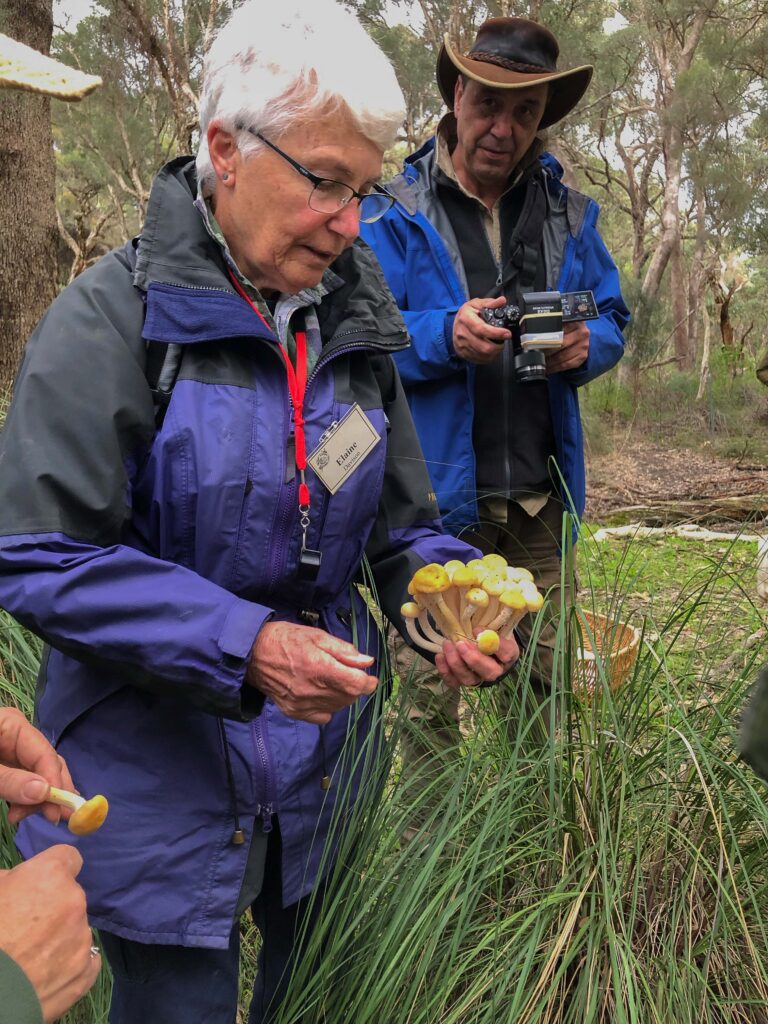
Elaine Davison discussing the Australian Honey Fungus 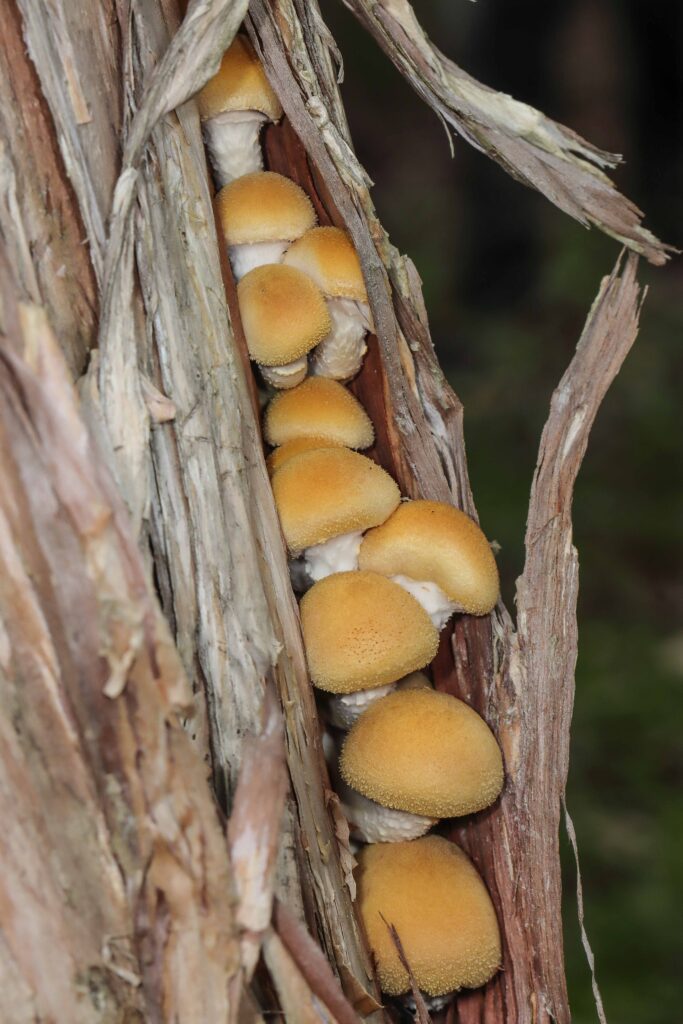
Australian Honey Fungus Armillaria luteobubalina
On trunks covered in moss, the Orange Mosscap (Rickella fibula) was generally present. Species found in soil included Clitocybe sp., Amanita sp. (including Amanita xanthocephala, the Yellow-headed Amanita), Agaricus sp., Russula erumpens, Rhubarb Bolete (Boletellus obscurecoccineus), Mycena sp., Coprinopsis sp. (Inky Cap), and a coral fungus. We also found two types of puffball fungus in soil – Pisolithus sp. (Dog Poo Fungus) and Scleroderma sp. (Earthball). One slime mould was found on rotting wood, the Icicle Fairy Fans (Ceratiomyxa fruticulose), with its minute fruiting bodies. A dung-loving psilocybe (Psilocybe coprophila) was found on kangaroo droppings. In total, we had traveled at most 300 meters from the car park, but over 25 species were found; it is a productive patch.
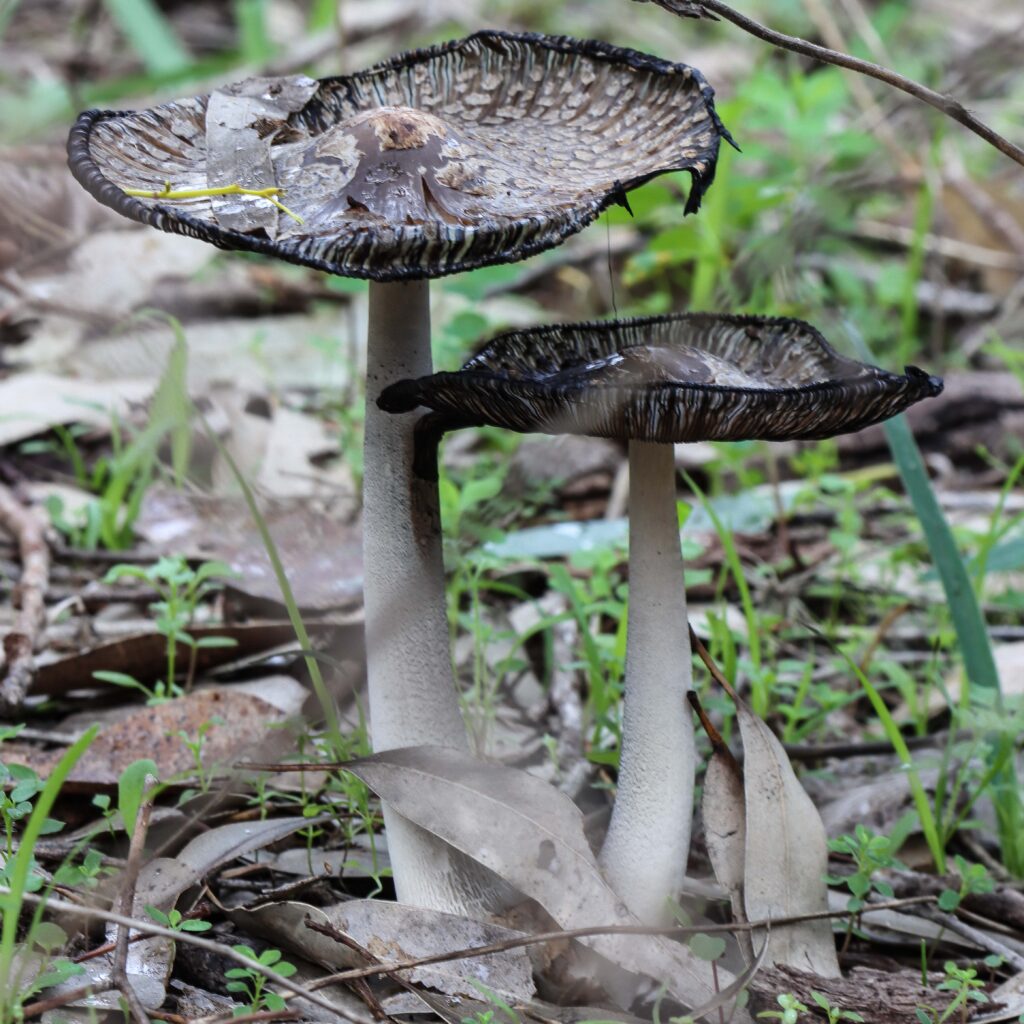
Old caps of Western Australian Magpie Fungus –
Corinopsis aff. stangliana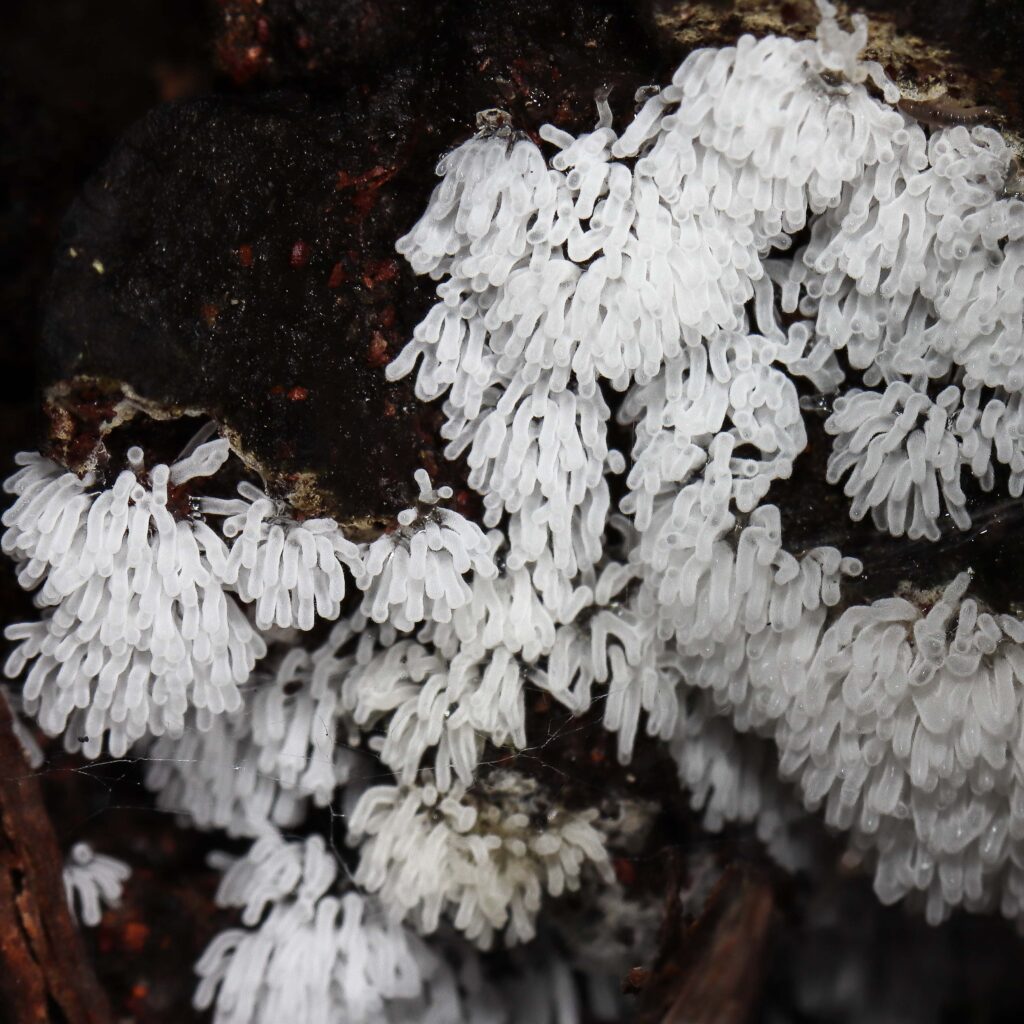
Icicle Fairy Fans – Ceratiomyxa fruticulosa 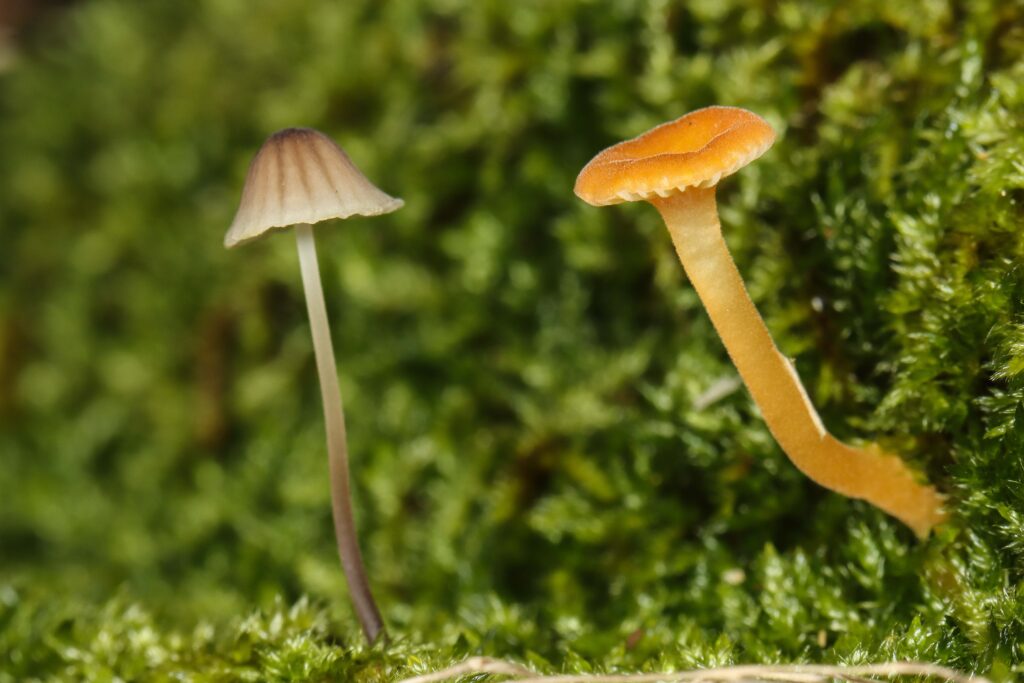
Mycena sp. and Orange Mosscap – Rickenella fibula in a bed of moss
Some members who explored the west part of the swampy area found that Midge Orchids (Cyrtostylis huegelii) were in bud. These will probably be in flower towards the end of July through to the end of August.
With the forecast rain just starting to fall, we made our way back to the car park. Elaine had a basket of specimens to display and discuss, but unfortunately, this had to be wrapped up prematurely as the heavy rain started to fall. Forgoing our usual coffee and chat about the morning’s walk, we all decided to jump into our cars and make a run for home. It was an unfortunate end to a great morning, but at least the weather had held off long enough for us to have a very successful hunt for fungi. A big thank goes out to Elaine for sharing her knowledge with our group and for providing a list of the species found.

